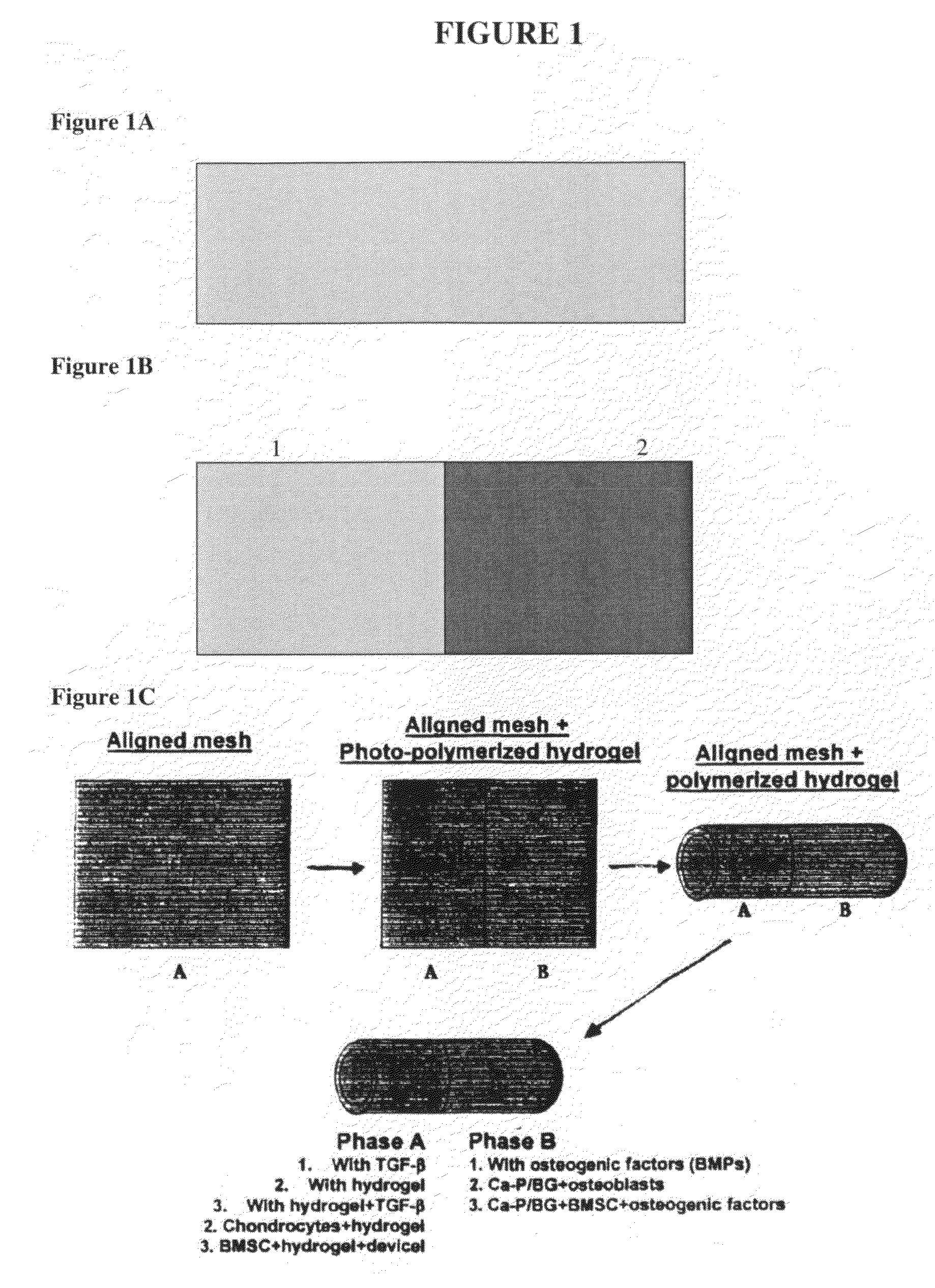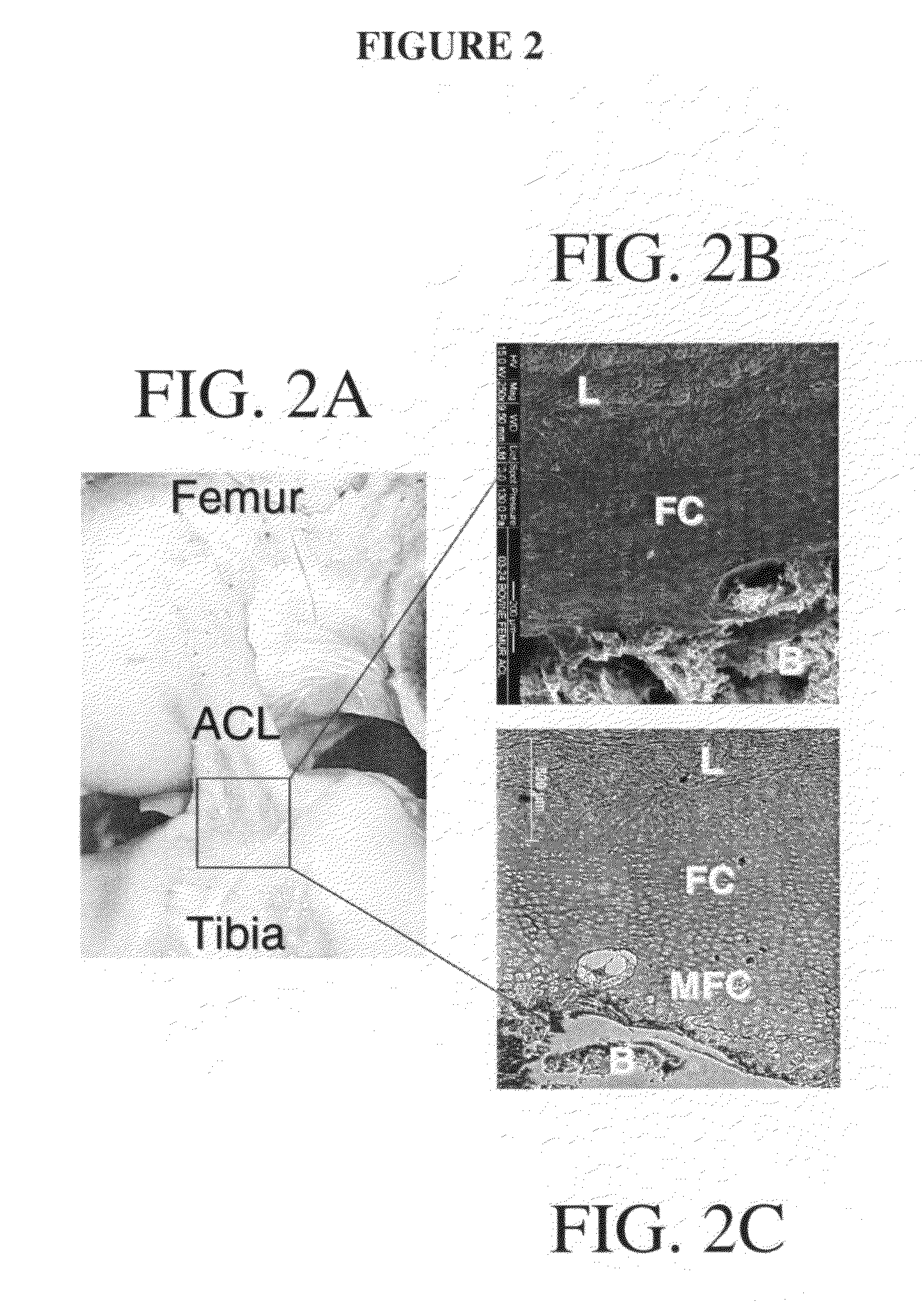Graft collar and scaffold apparatuses for musculoskeletal tissue engineering and related methods
a technology of musculoskeletal tissue and scaffolding, applied in the field of musculoskeletal tissue engineering, can solve the problems of site morbidity, failure of tendon-based grafts, and ineffective healing of acl ruptures, and achieve the effect of promoting the integration and regeneration of the interfacial region
- Summary
- Abstract
- Description
- Claims
- Application Information
AI Technical Summary
Benefits of technology
Problems solved by technology
Method used
Image
Examples
embodiments
[0172]The following exemplary embodiments and experimental details sections are set forth to aid in an understanding of the subject matter of this disclosure but are not intended to, and should not be construed to, limit in any way the subject matter as set forth in the claims which follow thereafter.
[0173]This application provides a graft collar for fixing tendon to bone in a subject, wherein said graft collar comprises a sheet of biopolymer mesh or polymer-fiber mesh.
[0174]In one embodiment, the biopolymer mesh or polymer-fiber mesh comprises aligned fibers. In another embodiment, the biopolymer mesh or polymer-fiber mesh comprises unaligned fibers. In another embodiment, the graft collar comprises a sheet of biopolymer mesh and the biopolymer mesh is derived from at least one of collagen, chitosan, silk and alginate. In another embodiment, the graft collar comprises a sheet of biopolymer mesh and the biopolymer mesh is allogeneic or xenogenic.
[0175]In one embodiment, the graft co...
experiment 1
Cell Co-Culture on the Biomimetic Multi-Phased Scaffold
[0278]To address the challenge of graft fixation to subchondral bone, a normal and functional interface may be engineered between the ligament and bone. This interface, according to one exemplary embodiment, was developed from the co-culture of osteoblasts and ligament fibroblasts on a multi-phased scaffold system with a gradient of structural and functional properties mimicking those of the native insertion zones to result in the formation of a fibrocartilage-like interfacial zone on the scaffold. Variations in mineral content from the ligament proper to the subchondral bone were examined to identify design parameters significant in the development of the multi-phased scaffold. Mineral content (Ca—P distribution, Ca / P ratio) across the tissue-bone interface was characterized. A multi-phased scaffold with a biomimetic compositional variation of Ca—P was developed and effects of osteoblast-ligament fibroblast co-culture on the de...
experiment 2
Design and Testing of a Triphasic and Continuous Scaffold with Controlled Heterogeneity Seeded with Bovine or Human Cells
[0302]The degree of graft integration is a significant factor governing clinical success and it is believed that interface regeneration significantly improves the long term outcome. The approach of this set of experiments was to regenerate the ACL-bone interface through biomimetic scaffold design and the co-culture of osteoblasts and fibroblasts. The interface exhibits varying cellular, chemical, and mechanical properties across the tissue zones, which can be explored as scaffold design parameters. This study describes the design and testing of a multi-phased, continuous scaffold with controlled heterogeneity for the formation of multiple tissues. The continuous scaffold consists of three phases: Phase A for soft tissue, Phase C for bone, and Phase B for interface development. Each phase was designed with optimal composition and geometry suitable for the tissue ty...
PUM
| Property | Measurement | Unit |
|---|---|---|
| length | aaaaa | aaaaa |
| diameter | aaaaa | aaaaa |
| area | aaaaa | aaaaa |
Abstract
Description
Claims
Application Information
 Login to View More
Login to View More - R&D
- Intellectual Property
- Life Sciences
- Materials
- Tech Scout
- Unparalleled Data Quality
- Higher Quality Content
- 60% Fewer Hallucinations
Browse by: Latest US Patents, China's latest patents, Technical Efficacy Thesaurus, Application Domain, Technology Topic, Popular Technical Reports.
© 2025 PatSnap. All rights reserved.Legal|Privacy policy|Modern Slavery Act Transparency Statement|Sitemap|About US| Contact US: help@patsnap.com



